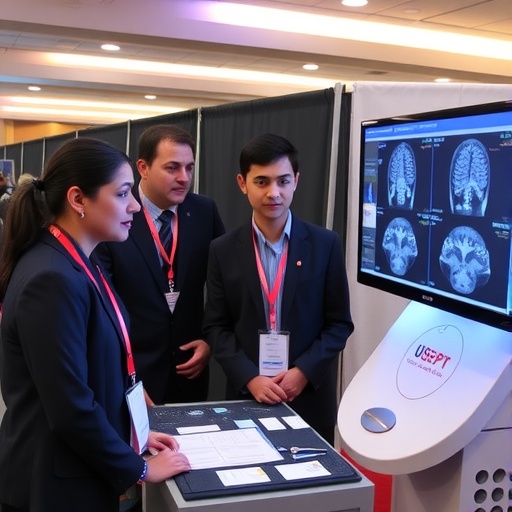University of Cincinnati Cancer Center Researchers Unveil Groundbreaking Radiation Oncology Findings at ASTRO 2025
In a landmark series of presentations scheduled for the annual American Society for Radiation Oncology (ASTRO) meeting, researchers from the University of Cincinnati Cancer Center will shed light on a range of pivotal investigations spanning head and neck cancers, hepatocellular carcinoma, and endometrial cancer. These studies probe not only the efficacy of advanced radiation techniques like proton re-irradiation and hypofractionated regimens but also delve deeply into patient safety profiles and treatment variability, promising to refine radiation oncology protocols and patient management strategies.
One of the most challenging dilemmas in oncology today involves the treatment of recurrent head and neck malignancies. Patients face daunting risks of disease recurrence and secondary cancers, with surgical options often limited due to tumor location or prior interventions. Addressing this precision gap, Dr. Taylor MacDonald and colleagues have meticulously reviewed 84 cases of proton re-irradiation at the Cancer Center. Their analysis reveals a sobering reality: more than 63% of patients experienced further disease progression within just four months post-treatment, while the one-year overall survival rate stood at 33%.
Proton re-irradiation represents a sophisticated modality whereby targeted proton beams deliver an additional course of radiation therapy to previously irradiated tissues, employing the physical properties of protons to minimize damage to surrounding healthy cells. MacDonald highlights that in absence of an established standard of care for recurrent cases, proton therapy provides an invaluable tool for enhancing local tumor control. Despite high-grade toxicities observed, these side effects were generally manageable, underscoring the critical need for judicious patient selection to balance therapeutic benefits against potential harms.
Looking ahead, the research team is focused on dissecting factors that exacerbate toxicity, particularly in patients with base-of-skull tumor recurrence—a subgroup for which long-term photon irradiation data remains scant. Their investigations are poised to inform safety enhancements and optimization of re-irradiation protocols that may transform outcomes in this recalcitrant patient population.
Complementing this work, Dr. Morgan Bailey and collaborators have conducted an insightful survey of expert radiation oncologists treating oropharyngeal cancers. Despite the prevalence of nearly 60,000 new oral cavity and oropharyngeal cancer cases annually in the United States, no standardized treatment paradigm has emerged. The survey exposed significant heterogeneity in therapeutic approaches among specialists across institutions, with implications reverberating from clinical trials to resident education and patient prognosis.
This stark variability reflects the complex interplay of tumor biology, technological capabilities, and clinician experience when navigating oropharyngeal cancer treatments. Bailey stresses how these findings urge a concerted effort to harmonize clinical guidelines and consolidate expertise in specialized academic centers to foster consistency that ultimately benefits patient outcomes.
Turning to hepatic malignancies, hepatocellular carcinoma (HCC) presents formidable therapeutic challenges due to its high intrahepatic recurrence rates and proximity to critical radiosensitive structures. Dr. Sarah Feldkamp’s study probes the safety profile of ablative radiation—a modality delivering concentrated high doses tailored to eradicate tumors—with an emphasis on hepatobiliary toxicity following treatment of centrally located HCC lesions. Remarkably, severe hepatobiliary complications were rare despite substantial radiation doses administered near sensitive biliary anatomy, indicating a favorable therapeutic index.
Such findings illuminate the increasing feasibility of precise ablative radiotherapy in managing difficult-to-treat liver tumors while preserving vital organ function. Feldkamp’s team intends to delve deeper into comparative toxicity across various ablative radiation regimens to further refine treatment planning and safeguard patient health.
Another pioneering evaluation from the same group examines the integration of patient-reported outcomes alongside clinician assessments in hypofractionated whole pelvis radiation for endometrial cancer. Hypofractionation shortens treatment duration by administering higher radiation doses per fraction, a strategy that has revolutionized breast and prostate cancer care. Their Phase 1 trial reveals a discrepancy: patients report higher rates of toxicity events compared to clinician evaluations, yet this does not correlate with diminished quality of life metrics.
This divergence underscores the intrinsic limitations of physician-only toxicity assessments and advocates for incorporating patient perspectives to capture the full spectrum of treatment impact. Feldkamp emphasizes that optimizing hypofractionated protocols could significantly improve convenience and adherence for endometrial cancer patients, pending validation of safety and efficacy.
Beyond these core studies, additional abstracts from the Cancer Center expand the frontier of radiation oncology knowledge. Jessica Ortega’s upcoming presentation investigates radiation necrosis, pseudoprogression, and radiologic changes after photon or proton chemoradiotherapy in IDH-mutated Grade 2-3 gliomas—tumors with distinct molecular and clinical profiles requiring nuanced therapeutic approaches.
Together, these comprehensive research efforts from the University of Cincinnati Cancer Center embody a relentless pursuit to enhance radiation oncology practice, guided by robust data and patient-centered inquiry. As technology advances and multidisciplinary collaboration deepens, these insights herald a new era of precision tailored not only to tumor biology but also to individual patient experience and safety.
Subject of Research: Radiation Oncology – Proton Re-irradiation in Head and Neck Cancers, Oropharyngeal Cancer Treatment Patterns, Hepatobiliary Toxicity in Liver Cancer, Hypofractionated Radiation in Endometrial Cancer
Article Title: University of Cincinnati Cancer Center Reveals Pioneering Radiation Oncology Findings at ASTRO 2025
News Publication Date: Not provided
Web References: Not provided
References: Not provided
Image Credits: Not provided
Keywords: Liver cancer, proton re-irradiation, head and neck cancer, oropharyngeal cancer, hepatocellular carcinoma, ablative radiation, hypofractionated radiation therapy, endometrial cancer, radiation toxicity, patient-reported outcomes




